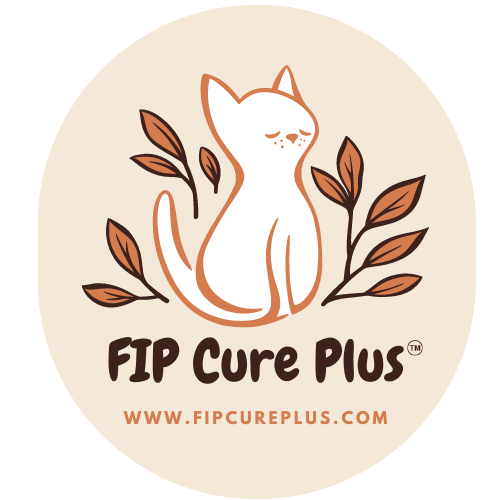How to Treat Your Cat with GS-441524 Tablets: A Practical Guide for FIP Cat Owners
Share
If your cat has been diagnosed with Feline Infectious Peritonitis (FIP), you're not alone—and there is hope. GS-441524 has transformed FIP from a fatal disease into a treatable condition. One of the most convenient and effective ways to administer this antiviral is through GS-441524 tablets. This comprehensive guide is designed specifically for cat owners to help you understand how to treat your cat confidently, monitor progress, and handle the full course of recovery at home.
What Are GS-441524 Tablets?
GS-441524 is an antiviral compound that blocks the replication of the mutated feline coronavirus responsible for FIP. It works at the cellular level to stop the virus from reproducing. In tablet form, GS-441524 offers a non-invasive, low-stress method of treatment, especially compared to daily injections that can be painful and difficult to administer. Tablets are preferred by many pet owners because they are simple to give, travel-friendly, and better tolerated by most cats.
Tablets come in different strengths and are designed for oral use. Many reputable sources now provide these tablets with consistent formulation and proven recovery rates.
Step-by-Step: How to Use GS-441524 Tablets
1. Calculate the Correct Dosage
Accurate dosing is essential for treatment success. The dosage depends on your cat's weight and the type of FIP diagnosed:
-
Wet or Dry FIP: 4–6 mg/kg once daily
-
Ocular FIP: 8 mg/kg once daily
-
Neurological FIP: 10–12 mg/kg once daily
It’s recommended to weigh your cat before starting and continue weekly weigh-ins throughout the treatment. As your cat gains weight, the dose may need to be increased. Treatment advisors or veterinary professionals can help calculate the exact dosage and match it to the appropriate tablet strength.
2. Administer the Tablet Daily
Consistency is key. Administer the tablet once every 24 hours at the same time each day:
-
Ideally, give the tablet on an empty stomach or with only a small amount of food.
-
Do not crush or split the tablet unless specifically instructed by your provider.
Tips to make it easier:
-
Use a pill pocket or hide it in a favorite treat.
-
Gently place it at the back of the tongue if your cat is cooperative.
-
Follow with a small amount of water using a syringe to help it go down smoothly.
3. Stick to the 84-Day Treatment Plan
-
The typical treatment course lasts 12 weeks (84 days).
-
Do not skip or delay doses.
-
If a dose is missed by a few hours, give it immediately. If it’s close to the next dose, skip the missed one and resume your regular schedule.
Monitor Your Cat’s Progress
Monitoring is vital to ensure your cat is responding well to treatment:
Regular Checks Include:
-
Weekly weigh-ins to determine dose adjustments
-
Daily observation of behavior, appetite, and energy levels
-
Blood tests every 4 weeks to monitor organ function and inflammation markers (especially globulin, A/G ratio, liver and kidney indicators)
Tracking your cat’s progress in a notebook or app can be helpful. Look for signs of improvement such as increased appetite, weight gain, reduced fever, and more activity.
After Treatment: Observation Period
When the 84-day course ends, your cat should begin a 12-week observation period without any medication. This phase is just as important as the treatment phase:
-
Continue monitoring behavior, appetite, and weight.
-
Watch for any symptoms returning, such as lethargy, lack of appetite, fever, or changes in coordination.
-
If symptoms reappear, consult your advisor or vet immediately. A second round of treatment may be needed.
Choosing High-Quality Tablets
Not all GS-441524 tablets are created equal. To ensure effective treatment:
-
Choose a reputable supplier with verified recovery cases and consistent lab testing.
-
Be cautious of counterfeit or substandard products, which can lead to treatment failure or relapse.
-
Ask for reviews, batch verification, or support before purchasing.
Creating a Supportive Environment
In addition to the medication, your cat needs a low-stress, comfortable environment to heal:
-
Provide a warm, quiet resting space
-
Keep fresh water and food available at all times
-
Offer small, frequent meals if your cat has a low appetite
-
Avoid introducing new pets or stressful changes during treatment
Emotional support from the owner can also make a huge difference. Spend time with your cat, offer gentle affection, and watch for signs of both improvement and discomfort.
Final Advice for Cat Owners
Treating FIP can be emotionally and physically demanding, but you are not alone. Thousands of cat owners have walked this path and come out the other side with healthy, happy cats.
Key reminders:
-
Stay calm, positive, and consistent.
-
Keep in touch with your treatment advisor or vet.
-
Don’t skip doses or stop treatment early.
-
Join online support groups to connect with other cat owners undergoing treatment.
With the right treatment plan, many cats fully recover from FIP and go on to live long, healthy lives. GS-441524 tablets offer a safe, effective, and manageable approach to treatment that empowers cat owners to take action at home.
Need Help Getting Started? We offer trusted GS-441524 tablets, personalized dosing assistance, and full treatment support. Contact us today to begin your journey toward recovery. You're not alone—we're here to guide you every step of the way.
